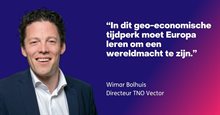We are conducting the impact study in collaboration with Statistics Netherlands (CBS), the Netherlands Bureau for Economic Policy Analysis (CPB), the Netherlands Environmental Assessment Agency (PBL), and other academic partners.
Impact on households’ economic well-being
Given the increasingly urgent threat posed by climate change and environmental degradation, we are facing the risk of social disruption. Actions taken to address this threat have major implications for economic well-being. Behavioural change and expensive interventions are needed. Not all Dutch people want to participate in these changes or are financially able to do so. As a result, the positive impacts of the climate transition are distributed unevenly across society.
One example is energy poverty. This is a problem that only affects less well-off citizens. Subsidy schemes, which are criticised for mainly benefiting the upper socio-economic groups (the ‘Tesla subsidies’), are another example. This leads to general dissatisfaction with government policies and undermines support for the climate transition.
New framework for economic impact assessment
To make the climate transition a success, we need a greater insight in advance – an insight into the distribution of the socio-economic costs and benefits. In many cases this is still lacking, partly because there is not yet a suitable economic impact assessment methodology that can be used to identify these costs and benefits.
Existing, influential economic impact assessments, such as social cost-benefit analyses (SCBAs), are not suitable for this purpose. These types of models hardly identify any of the distributional impacts between different groups of households. Nor do they offer a comprehensive analysis that goes beyond financial implications alone.
That means there is a need for an integrated method that is capable of examining and predicting the impact along multiple dimensions:
- Emission reductions
- Quality of life
- Accessibility
- Investment costs
- Purchasing power
- Housing market
- Labour market
Early Research Programmes
So-called Early Research Programmes help with work on projects at an early stage of their scientific development, based on an identified opportunity. The aim of this specific programme is to develop a new methodology for assessing economic impacts that is suitable for a number of major societal transitions.
With this Early Research Programme we are focusing on the economic impact of the climate transition on households, concentrating in particular on the housing market, traffic and transport, and the labour market.
The backbone of the programme is the development of three building blocks for the new assessment framework:
- Microsimulation models plus model linkages
- Microdatasets with geocodes
- Tools to communicate impacts to policymakers
Themes
We have organised everything around themes: the built environment, mobility, and the labour market, or the housing market, transport market, and labour market.
Case studies and collaborations
Energy
We conducted this study together with the CPB. We analysed the distribution of income effects if households were to retrofit their homes to the national home-insulation standard.
The key question is: for how many households does investing in insulation measures have a net positive (or negative) impact on disposable income?
To answer this question, we linked the PBL’s and TNO’s HESTIA energy model to the CPB’s MIMOSI microsimulation model. We also used CBS administrative microdata on each individual household’s income and assets.
The insights from the study allow energy and climate policies to be assessed against different distributional principles.
Mobility
We conducted this study with VU Amsterdam (specifically the Department of Spatial Economics). Together, we developed a beta version of a new spatial general equilibrium model (ORANGE). This was linked to our own transport model Urban Strategy.
We used the ORANGE-US linkage to calculate the various effects of imposing a zero-emission zone in the Amsterdam region. An urban zero-emission zone could have major implications. These could include the need to start using an electric vehicle, change your mode of transport, or even look for other work.
The Urban Strategy model provides an insight into the impacts of an emission zone on the routes people use to travel and the impacts on air quality. In turn, the ORANGE spatial model provides an insight into the impacts of policies on workers’ choices of where to live and work and their modes of transport.
Work
Together with the PBL and ROA (Research Centre for Education and the Labour Market at Maastricht University), we studied the impacts of the climate transition on the labour market – specifically, investments in certain sectors, including investments in home insulation.
We did this by linking expertise and models, using CBS administrative microdata. Our aim was to link analyses of employment opportunities with analyses of skills. This gave us an insight into the impact of the energy transition on the match and possible mismatch between the two.
The results obtained can contribute to the development of targeted labour market policies.
Knowledge development with chain partners
In this programme we are collaborating with various knowledge institutions, such as:
- Netherlands Bureau for Economic Policy Analysis (CPB)
- Statistics Netherlands (CBS)
- Netherlands Environmental Assessment Agency (PBL)
- VU Amsterdam
- Utrecht University
- Research Centre for Education and the Labour Market (ROA), Maastricht University



